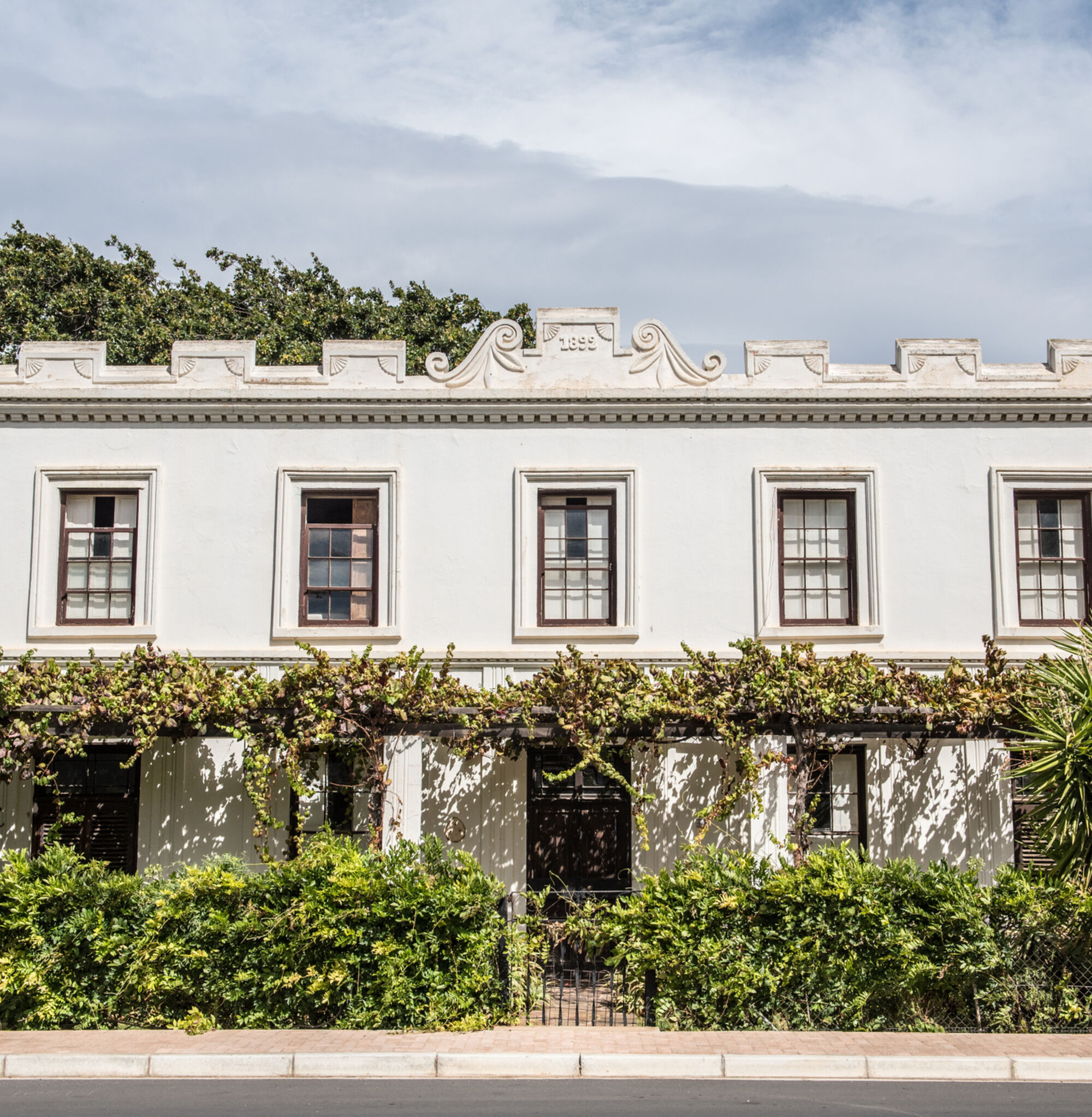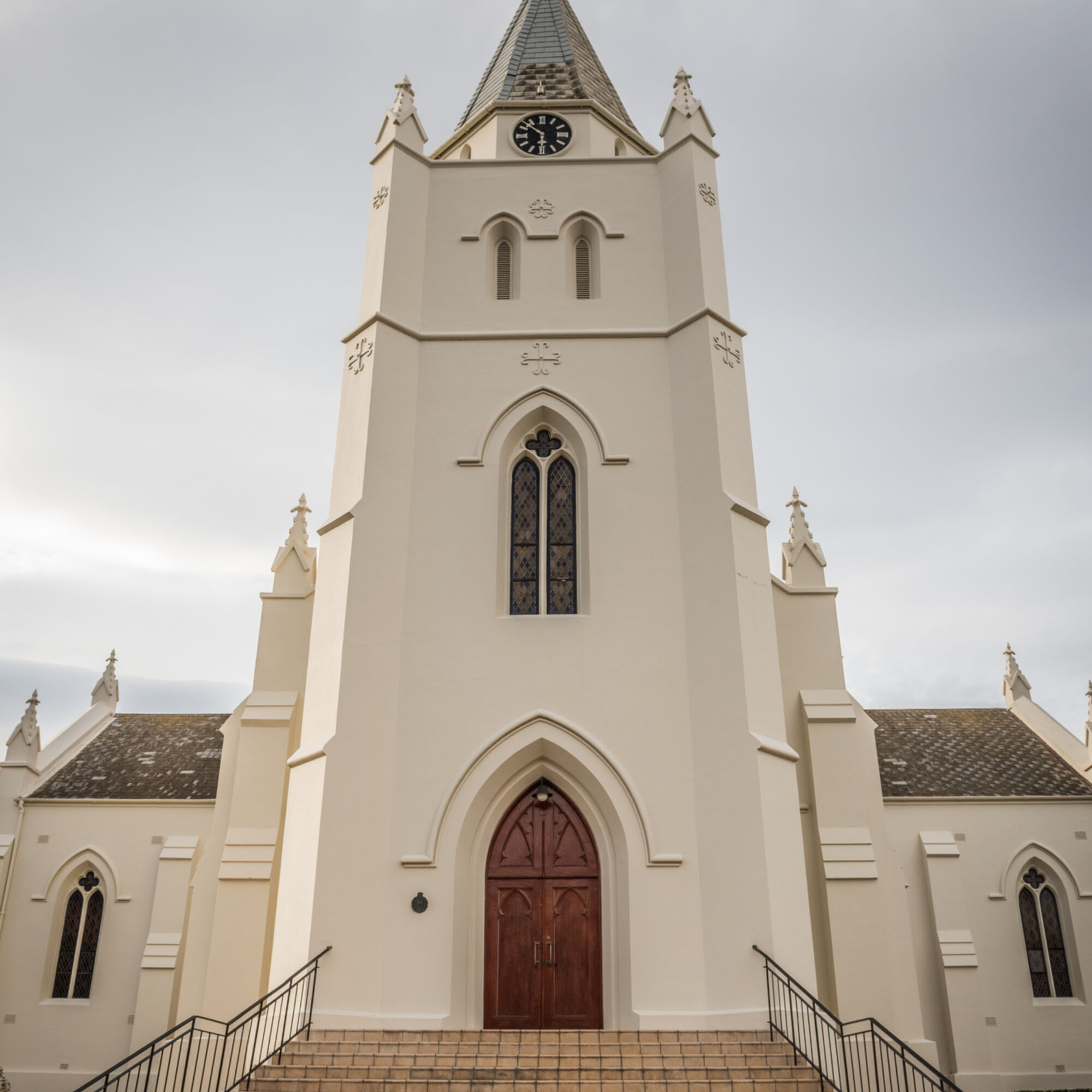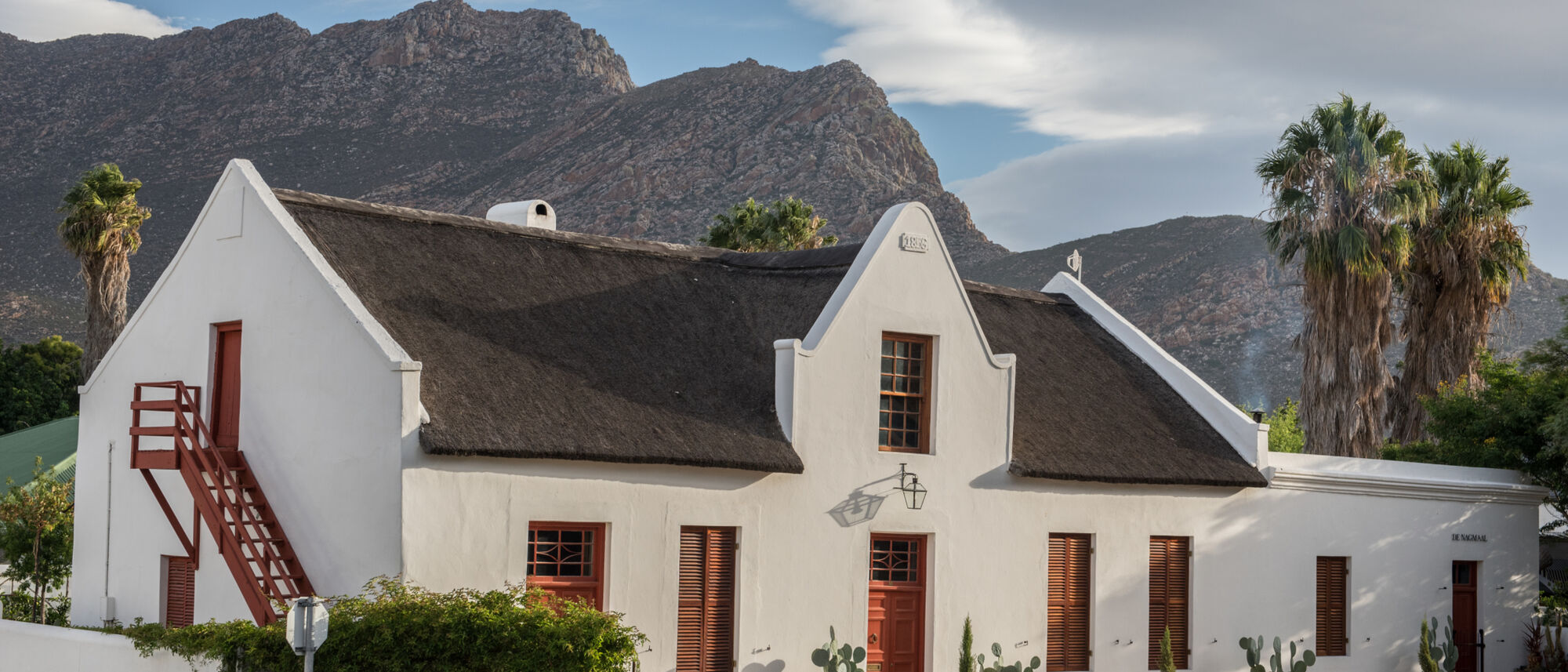The finest way to get a feel for this pretty platteland town is to take a circular amble around its heart. One golden summer’s afternoon, I set off from the Dutch Reformed Church on Bath Street. Constructed between 1858 and 1862, this neo-Gothic, cross-shaped building with its imposing spire is the centrepiece of the town.
Heading west, I came to one of Montagu’s architectural gems – the graceful, ochre-coloured house at number 20 Bath Street. This thatched, Cape Dutch building has four lovely florid gables and a pretty front door with delicate fanlight above.
Just past the leiwater dam, thronging with waterfowl, I took a left into Rose Street. Before me lay the old Dutch Reformed parsonage, an imposing Edwardian villa built in 1911. Its central passage is said to be 30 metres long and has 15 rooms leading off it. This was once the home of dominee DF Malan, who went on to become prime minister.
I turned left into Long, one of the most beautiful village streets in South Africa. There are national monuments at every turn, interspersed with fields and orchards, giving it a charming rural feel. Look out for the square, pedimented gable (1859) at number 17, the five-bay Cape Georgian double-storey (1865) at number 26 and the typical thatched, L-shaped cottage with end gables (c. 1860) at number 32.
Next came the delightful Joubert House (1853), the oldest surviving residence in Montagu (with an outbuilding thought to have been the dorp’s first prison). Today it’s a house museum portraying the typical country lifestyle of the 1850s with a kitchen laid with peach pips and a fragrant back garden planted with medicinal herbs.
Continuing down Long Street I passed more homes boasting a variety of architectural styles, including the lovely Victorian townhouse ‘Bonheur’ and the former home of artist François Krige (1860) at number 35. The cottage next door served as his studio and today showcases some of his Montagu works.
Next up on my amble was the town museum, housed in the old mission church (1907). Exhibits bring the history of Montagu to life with photographs, documents, furniture and paintings. Its organ, pulpit and copper baptismal font are particularly fine.
Montagu also boasts a number of elegant industrial buildings, and next up on Long were the imposing KWV buildings (1930s), evidence of the town’s agricultural and distilling history. With rows of consecutive gables, they create an imposing sight on the corner of Long and Kohler, into which I now turned, bringing me back to Bath Street.
It was time for a well-earned pit stop at the Montagu Country Hotel, a fine example of Karoo Art Deco, for coffee and cheesecake on their charming terrace where I could watch the comings and goings of this seductive platteland world.





















